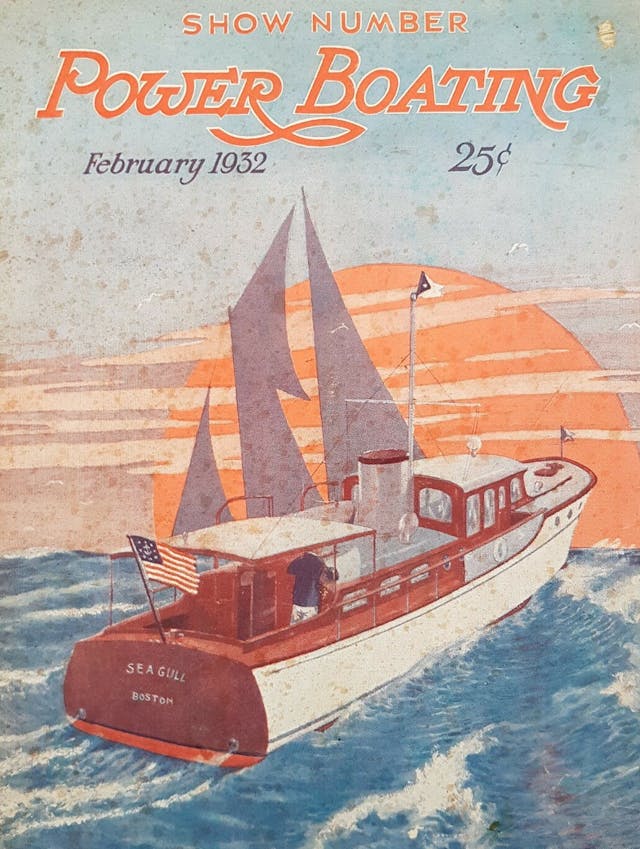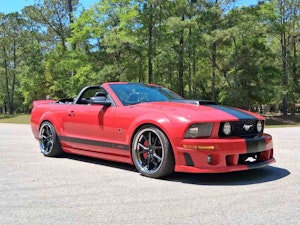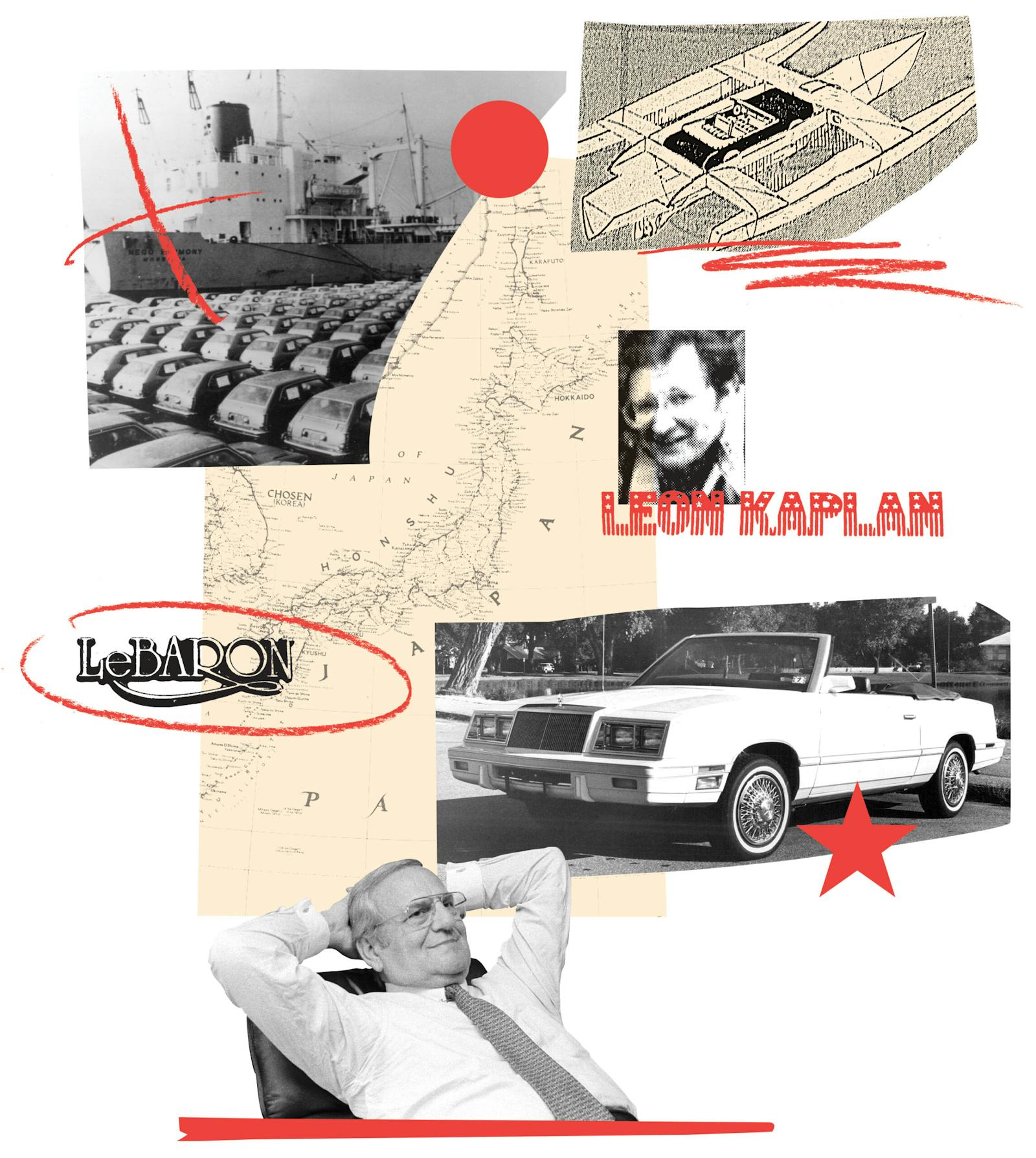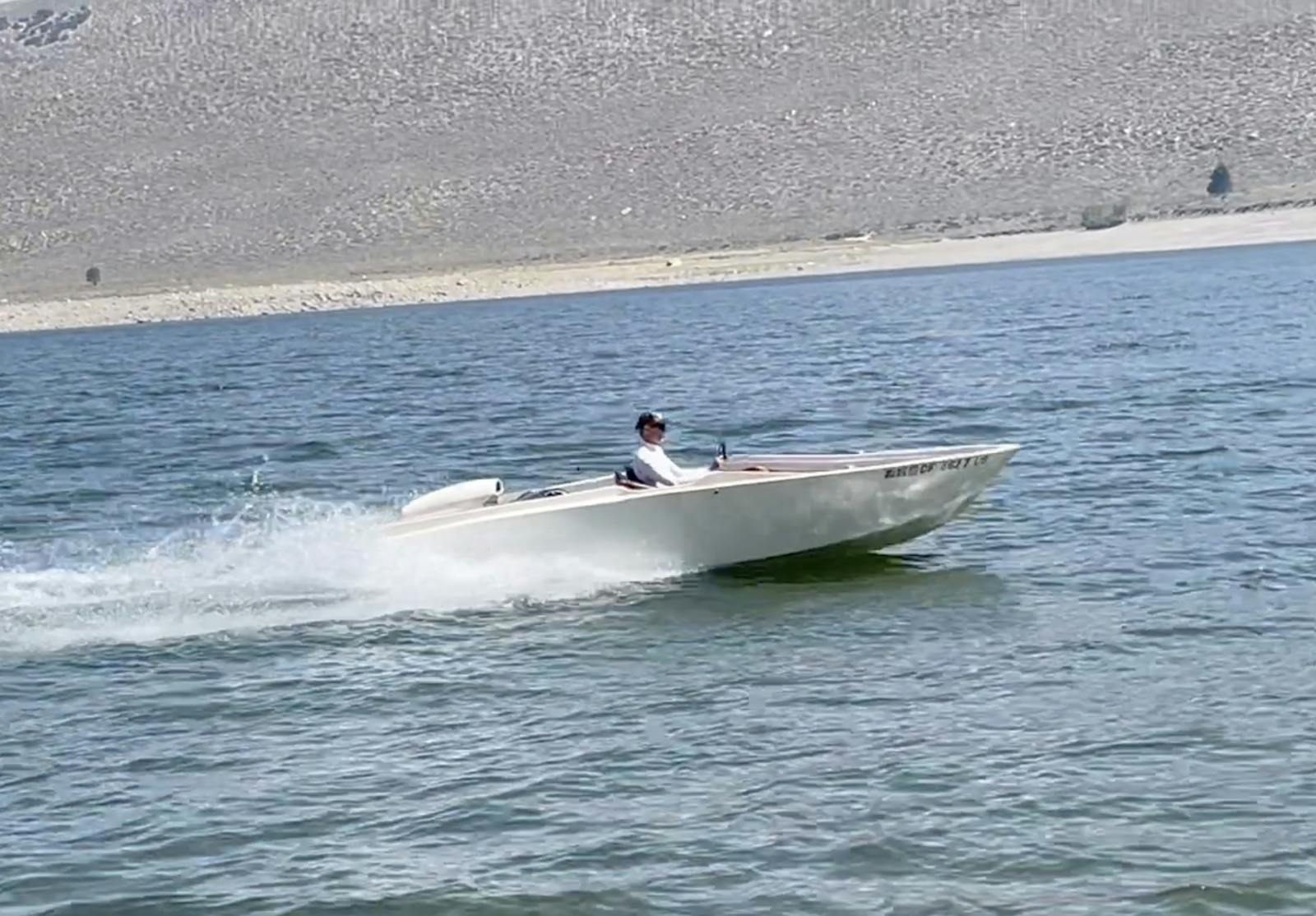Media | Articles
In February 1932, you could buy plans for John Hacker’s new hydroplane for $20

Last April, we stumbled upon a February 1932 issue of Power Boating magazine and republished a fascinating story of a harrowing Atlantic Ocean trip along the New England coastline during the Great Depression.
There’s a lot more interesting marine content in that 89-year-old magazine, so we thought we’d share one more story from the February 1932 issue. Here is the “latest” offering from famed boatbuilder John L. Hacker …

Famous designer produces plans of popular class
Last season saw the launching of a new racing class, the 125-cubic-inch hydroplanes, fathered by John L. Hacker, N.A. This class was officially sponsored by the American Power Boat Association and certain strict roles adopted regarding the use of stock engines. The purpose of such rules, of course, is to keep the original cost of these boats well within the reach of modest means for, of the riles allowed the use of any make of engine, limiting it only to cubic inches of piston displacement the purpose of the class would be destroyed by someone who could afford to buy some specially built engine of higher power.
Readers will remember, undoubtedly, the plans of a 125-cubic-inch class hydroplane, by John L. Hacker, which appeared in the May 1931 issue of Power Boating. A large number of these plans were sold by Mr. Hacker, and boats were built in all parts of the country. In addition to the Hacker boats, a number of extremely successful boats were designed and built by the Century Boat Co., in Manistee, Mich. (the famous Century Thunderbolt) and also by the veteran hydroplane builder Adolph Apel of Atlantic City, N.J.
Everything considered, the 125-cubic-inch class made a very auspicious start and will undoubtedly become an extremely popular class in the coming season. This, of course, depends on the number of boats. To be really successful, racing must be highly competitive, and interest soon lags in any sport where there are only two or three entries. This is particularly true in power boat racing, and it is for this reason that John L. Hacker has prepared the accompanying plans. Mr. Hacker believes that by offering these plans for the very moderate sum of $20 [that’s about $375 today], it will greatly assist the popularity of the class. This price includes a full set of scale blue prints together with the table of offsets.
Marketplace
Buy and sell classics with confidence

In this new set of plans, Mr. Hacker has incorporated all his experience gained during the season of 1931 with various experimental models. The plans are based on several boats, which were built under his own supervision and which actually accomplished 40 miles per hour. In this connection, it is interesting to note that the latest boat was powered with a four-cylinder Universal Blue Jacket engine, which turned an 11.5-inch diameter propeller at 4500 revelations per minute to make exactly 40 miles per hour. In view of the fact that the 1932 model Universal Blue Jacket is said to deliver eight to ten horsepower more than the 1931 model, it is reasonable to expect even higher speeds than 40 miles per hour.
The construction of this little hydroplane is not extremely difficult, nor are the materials extremely costly. The keel may be of mahogany, spruce, or fir, and the stem of either oak or mahogany, although, if possible, a Hackmatack knee is preferable.

The framing is sawed construction made up of side and bottom members riveted together, screw fastened, or bolted, as desired. The planking should be of mahogany. Philippine mahogany is an excellent wood for this purpose and is not expensive, as there is practically no waste because of the extremely clear nature of this wood as compared to some of the cheaper but softer woods. Batten seam construction is used, and the planking screw fastened. The matter of finish is one for the individual to decide for himself. The deck may be of mahogany and finished natural or it may be of a light soft wood and canvas covered.
One advantage of a boat such as this us that there is no particular difficulty in securing special fittings such as strut, rudder, etc. Mr. Hacker has these in stock at extremely reasonable prices, and he is also in a position to furnish the boat in various stages of construction, or the complete boat, as may be desired.












